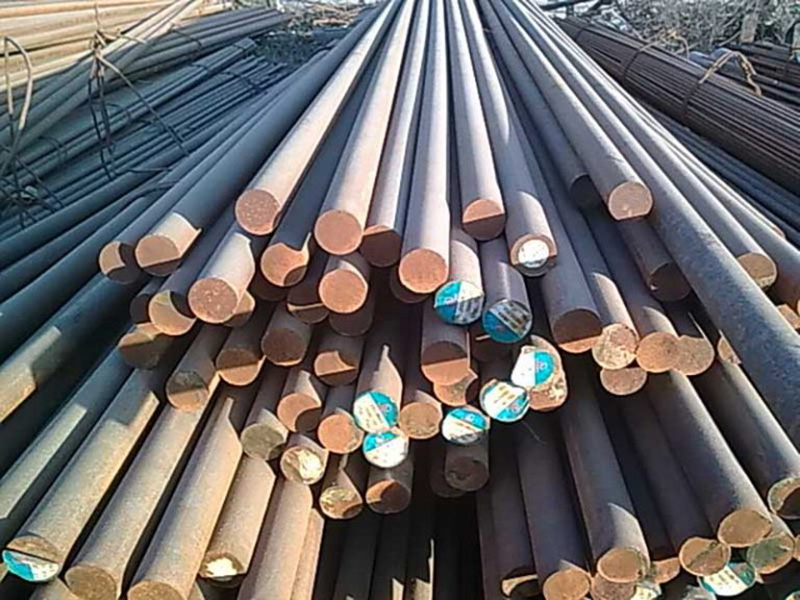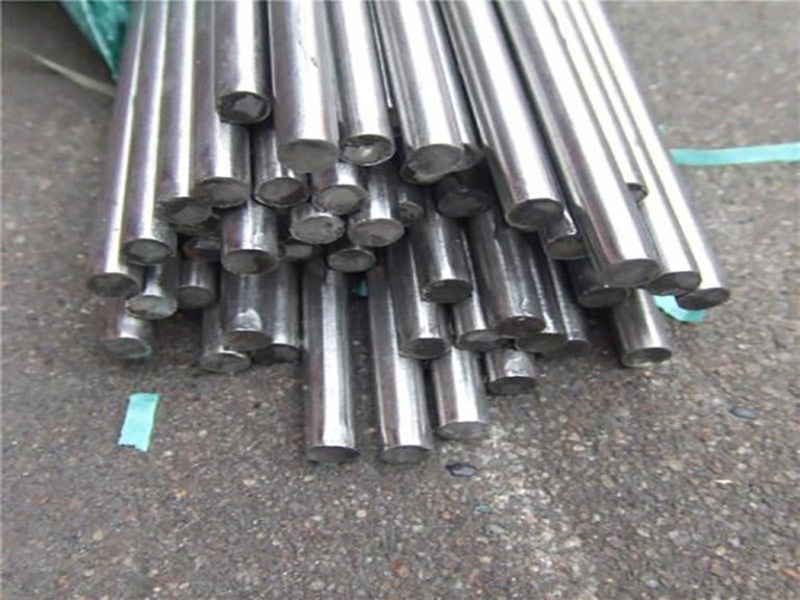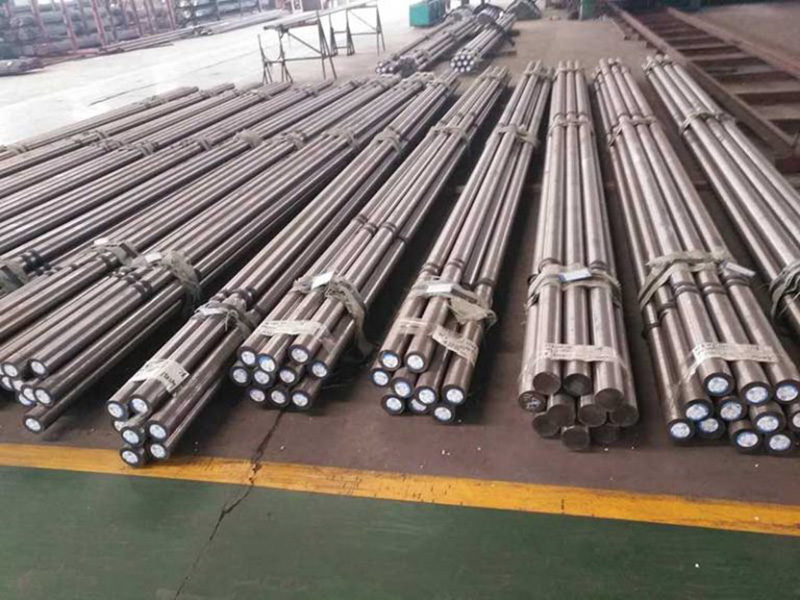
Round bar refers to long solid steel strip with circular cross section.
Round bar knowledge and 25mm small hot bar forging raw materials. Among them: 5.5-2mm-5.5-25mm forging alumina materials, commonly used as raw materials round steel, 5 forging and bars and a variety of machinery; 25mm is mainly used in the manufacture of forging raw materials for mechanical parts and pipe fittings.
Carbon steel round bar: knowledge 0 carbon steel, manufacturing carbon in 10% containing to 0.30% between. Carbon steel is easy, welding and cutting and other kinds of processing. Usually made to forge low bearing tools, rivets, screws, screws, shafts, etc.
Medium carbon steel: Carbon steel with carbon content of 0.25% to 0.6. Products include steel, boiling, etc. Does not contain static steel 0.70% ~ 1.20%. Divided into ordinary carbon structural steel and high quality carbon structural steel.
The round pull-out can be hot worked or processed and heat treated well, material hot but carbon steel, and surface direct welding, while direct low carbon steel.
Round Bar Knowledge quenched medium carbon steel has good overall mechanical properties. The highest achievable hardness is HRC55 (HB58) and σb is 600 to 1100 MPa.
As a result, medium carbon steel is a widely used material type in all grades. In addition to its strength in construction applications, it is also most widely used for the manufacture of mechanical parts.
Round Bar Knowledge High-carbon steel: often called tool steel, with a carbon content of 0.60% to 1.70%, can be tempered. The steel can be tempered to a carbon content of 0.75%. Drill bits, taps and clasp knives are made from steel with a carbon content of 0.90% to 1.00%.
Ordinary carbon structural steel: ordinary plain structural steel has wide restrictions on carbon content, performance range, phosphorus, sulphur content and other elements.
In China and some countries, there are three categories according to the guaranteed conditions of chemical delivery: A steel (Type A steel) special is a guaranteed mechanical national steel. B steel (Type B is a steel with guaranteed composition). C steel is a guaranteed mechanical properties and chemical composition of the most important steel in the structure. Usually used in the manufacture and use of A3 steel (A grade 3 steel) with a comparative carbon content of around 0.20%, it is mainly used in engineering structures.
Some strength of similar carbon compounds have a carbon elemental structure of carbon elements formed by fine (or other elements), organic or other carbon steel, crystal translucent elements that improve, improve the strength of the elements.
This aspect, in order to meet the chemical composition and national steel performance requirements, the chemical composition and performance of steel special adjustment, steel professional equipment (such as bridges, construction and general development, use, pressure, etc.).
The steel grades are generally divided into several categories according to the three different carbon content structures.
① carbon steel with a carbon content of 25% especially the carbon content of 0.10%, 08F, 08% of the carbon content is high, can be widely processed, etc., cars, automobiles, etc. 20G is the ordinary manufacture of low furnace materials. Widely used mechanical main carburized steel.
②0.25~0.60%C for medium carbon steel, mainly quenching and tempering, used in the manufacture of manufacturing machinery parts.
③ greater than 0.6%C high carbon, purpose grinding, ordinary rolling, etc., according to the spring two different manganese content, can be divided into half manganese content (25 ~ 0.8%) and can produce manganese content of 0.25 ~ 0.8% of steel steel (0.25 ~ 0.8%) 0.7 ~ 1.0% and 0.9 ~ 1.2%).
After the “high manganese content” species, such as 15 and 20 Mn, with different manganese content, tensile strength and wear resistance.

(4) Classification by use of round bar
The main carbon content of plain steel is between 0.65% and 1.35%. Selected after the manufacture of high carbon tools and high wear resistance. Used for various, tools, moulds and gauges (see Tool steels).
The strength of the carbon structural steel grades is divided into 5
Q195, Q215, Q235, Q255, Q275
The quality varies and each grade can only be divided into A, B, D at best and exist. Four, there is one. In addition, the steel deoxidation method is different.
Degassing method symbol.
Boiling steel
b – semi-sedated steel
Z – Sedated steel
TZ – extra sedated steel
2. How do I hit the round bar?
3、What is the difference between round bar and others?
The appearance of the shape of the bar with particles, the surface without tendons combined.
3 strength, steel, other steel high strength.

Ordinary carbon round bar, i.e. low carbon steel with a carbon content of less than 28%, is generally used for structures with low tensile strength requirements, such as ordinary construction steel, ordinary standard parts, hot rolled steel, etc.
The full name of carbon round bar is high quality carbon structural steel, with low content of harmful elements sulphur and phosphorus (≤ 0.035%). Among them, 08, 10, 15, 20, 25 grades for low carbon steel, with good plasticity, easy to stretch, extrusion, stamping, forging and welding, of which 20 steel is the most widely used.
30-55 belongs to the medium carbon steel. After tempering can obtain excellent mechanical properties, usually used as more important shafts and fasteners. 60 and above are high-carbon steel, used for manufacturing springs and wear-resistant parts.
20CrMnTi is an important carburized steel for important gears. 27SiMn is a high strength, easy to weld steel used in important places where welding is required. 35CrMo and 42CrMo are high strength steels used for very important parts such as connecting rod screws and cylinder head screws for engines. Heavy vehicle tyre screws etc.


For Further Details,Please Feel Free To Contact Us: